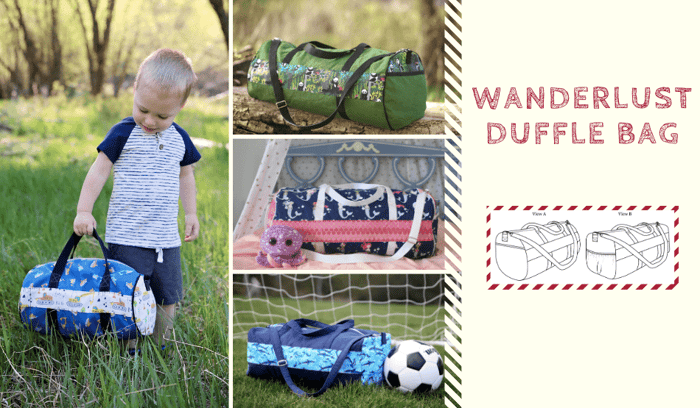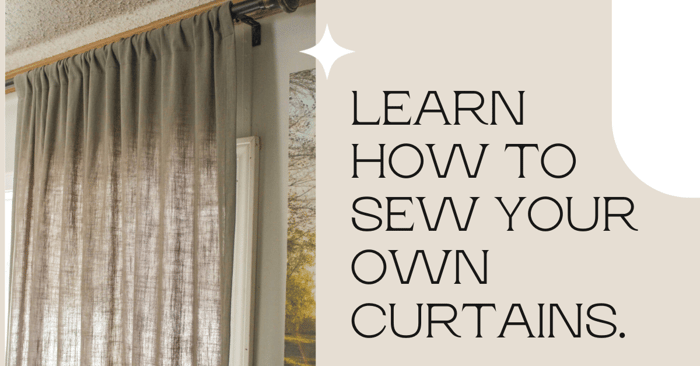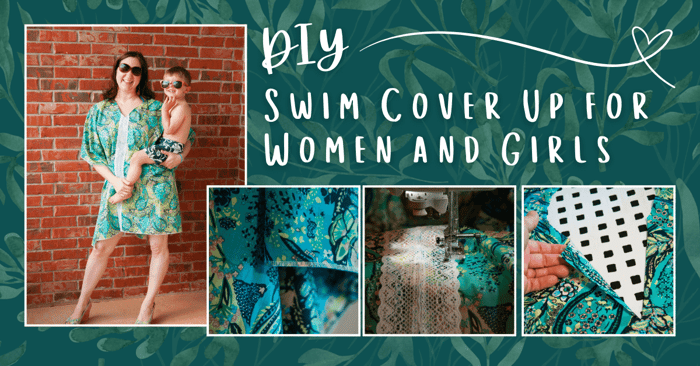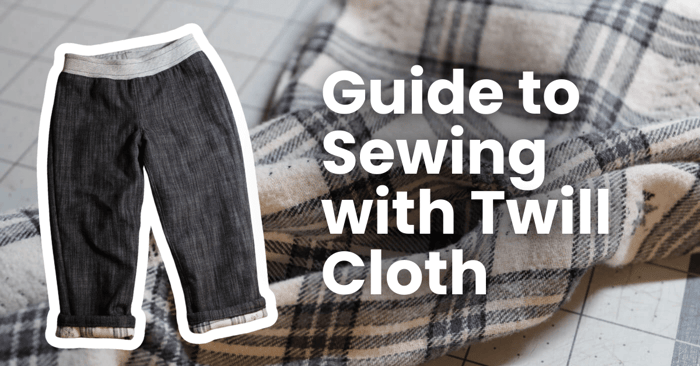
Twill Fabric 101 | Guide to Sewing with Twill Cloth
Today we are going to dive into the world of twill fabric and learn what makes twill so versatile and what it has to offer us as well as a simple understanding of what it is and more. I've even included a sewing tutorial using twill to create a basic pair of pants. In this blog post, you’ll learn everything you need to know about twill fabric, from its features and benefits to its uses and how to properly care for it.
Peek-a-Boo Pattern Shop has a variety of sewing patterns you can use twill with - including the Trailblazer Pants, Chino Pants, Sporty Girl Skort and many more!
What can I make with Twill Fabric?
Twill is most commonly known for the cotton denim or chino bottoms you wear. In other words- it makes a great pair of pants, shorts or skirts. It also works great for jackets, uniforms, ties, suits and more. Not only is it good for clothing, but it can also be used for rugs, curtains, table runners, napkins, pillows, bags etc. making it a versatile fabric to work with!
Understanding Twill Fabric
Twill fabrics are woven with a signature diagonal pattern, making them durable and resistant to wrinkles. One of the most iconic contexts in which twill fabric is used is in the manufacture of denim jeans. Commonly used in trousers, this cotton twill fabric also works well for home decor and accessories. Fabrics such as cotton, wool, silk, and polyester blends, for example, can be made in the twill style using this method. That means that the twill weave can be found in many different fabric bases. The front or right side of twill fabric will show the diagonal weave more so than that of the backside and will look slightly different.
Here are a few characteristics of twill fabric:
- Durability: Famed for its impressive resilience, cotton twill fabric stands as a top choice for sturdy apparel and upholstery. Resistant to wear, tear, and fraying, it guarantees longevity and dependability, ideal for high-traffic areas and frequently utilized textile products. Crafters harness the enduring nature of cotton twill to fashion robust pieces for various applications, recognizing its durable essence as a lasting solution.
- Texture: The woven pattern of cotton twill fabric creates a distinctive texture, setting it apart from plain weaves. The diagonal lines add depth and visual interest, giving the fabric a unique appearance and feel. This textured surface provides a tactile experience, enhancing its overall appeal. The twill weave contributes to the fabric's unique texture, making it ideal for various sewing projects.
- Drape: Enhancing the fit of garments, twill fabric drapes gracefully, creating flowing, flattering silhouettes. Its supple drape adds sophistication to clothing and upholstery, with a graceful, flowing movement that enhances visual appeal. The drape of cotton twill fabric allows it to elegantly conform to the body, making it ideal for garments requiring fluidity.
- Versatility: Twill fabric's adaptability enables the creation of a wide array of garments and accessories, suitable for both casual and formal wear. It extends to upholstery, making it an ideal choice for durable and stylish furniture covers. Additionally, twill fabric's versatility makes it perfect for crafting various accessories such as bags and hats, and it can be used to create an extensive range of garments, from trousers to outerwear.
- Resistance to Wrinkles and Stains: Twill fabric's ability to resist wrinkles and stains adds to its appeal, making it a practical and long-lasting choice for apparel, upholstery, and everyday wear. The fabric's low-maintenance nature makes it ideal for travel, ensuring that it maintains a fresh and clean appearance over time. This resistance to wrinkles and stains, along with its durability, makes cotton twill a popular choice for various applications.
- Longevity: With its exceptional durability, cotton twill maintains quality through wear and washing. This longevity makes it a sustainable choice for textile products, reducing the frequency of replacements. Whether used for garments or upholstery, twill's enduring nature ensures reliability across various applications.
The Making Process of Twill Fabric
Crafting cotton twill involves a complex weave, with the weft passing over and under multiple warp threads to form a distinct diagonal pattern. This technique creates the fabric's unique texture and appearance. Manufacturers utilize various twill weaves, resulting in diverse textures and finishes. They achieve the desired diagonal lines pattern by carefully manipulating the warp and weft threads. This process is crucial for designers, seamstresses, and textile enthusiasts seeking to use cotton twill in their projects.
Twill is very strong and durable. Thanks to the tight weaving process, it will hold up to wear and tear for quite some time. It is also comfortable and offers flexibility in spite of its texture. It's great at hiding dirt and stains, has nice drape and doesn't wrinkle easily. It consists of a high thread count which means it won't be see through and that makes it very suitable for specific types of clothing. It can be found in lightweight or heavyweight and is usually pretty affordable for the home sewer.
Tips for Sewing With Twill Fabric
- Always pre-wash your twill.
- Twill is directional or napped so be sure to know which is the right vs the backside and pay attention to the grain direction.
- Finish the seams or they will fray.
- Use sharp needles in the appropriate size depending on the weight of your fabric and a heavy-duty thread such as polyester.
- Sew with a straight stitch.
Now, I would like to show you how much of a breeze it is to sew with twill using the trailblazer pants pattern from peek-a-boo pattern shop.
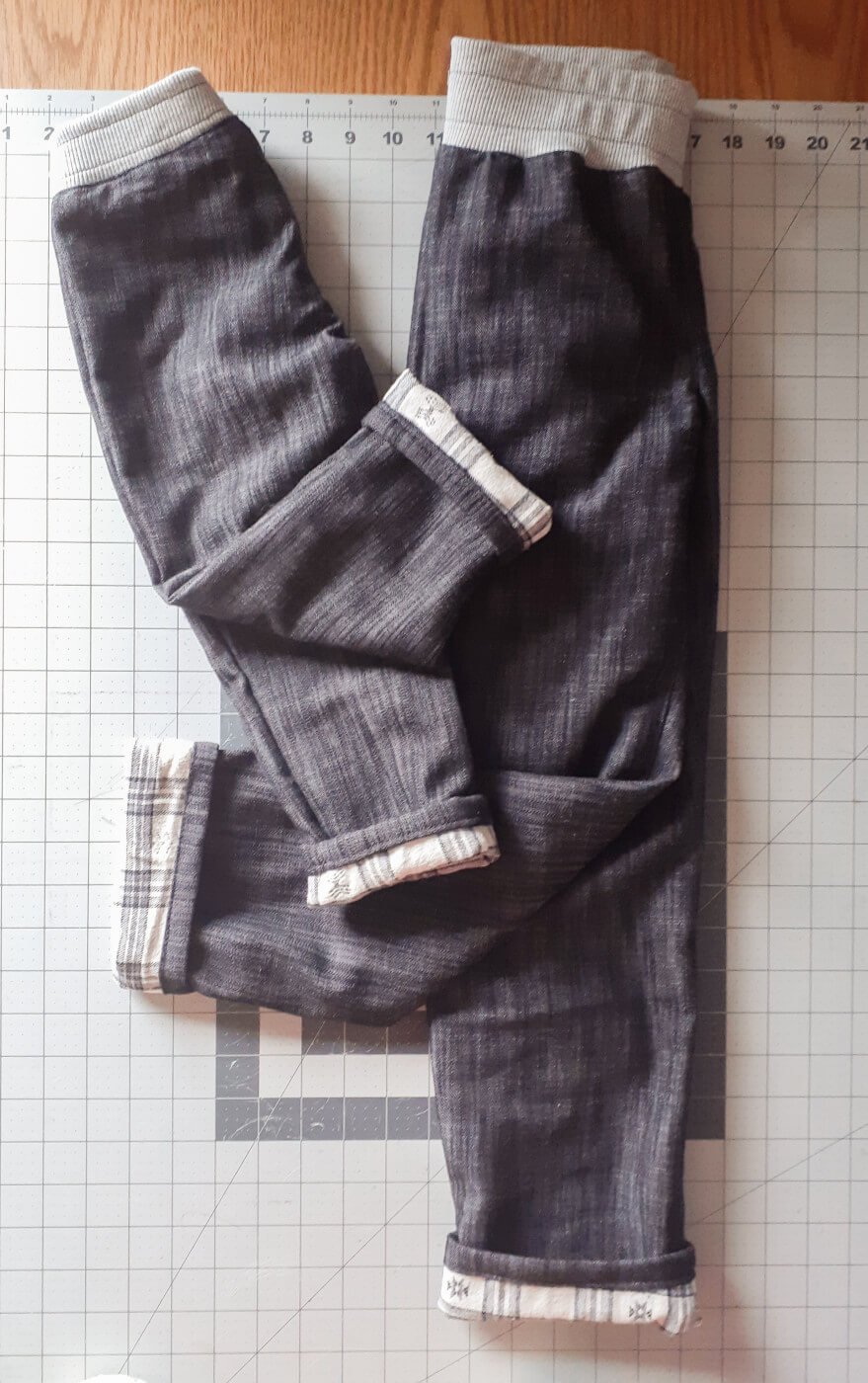
Supplies
- Trailblazer pants pattern
- Twill fabric plus lining fabric if including one
- Coordinating thread and appropriate needle size. I used a denim needle.
- Sewing machine, iron, ruler, scissors and elastic.
I'll be sewing up a very basic version of this pattern. I will also be including a lining in flannel fabric. To make this all work, you will want to use the lining pattern pieces when cutting out your pants. Doing so omits the faux fly and I chose not to add the yoke or pockets to keep it simple.
You will be cutting out 4 of each leg piece if including the lining; otherwise, just 2 of each pant leg is required. The outer leg pieces will require 1" of added length to the bottom of each leg. The lining will be cut as is. As with all woven fabrics, finish your seams to prevent fraying.
In the pattern instructions, we'll skip down to step 8 (as I chose not to include the yoke) and place both back pant pieces right sides together and sew along the back rise.
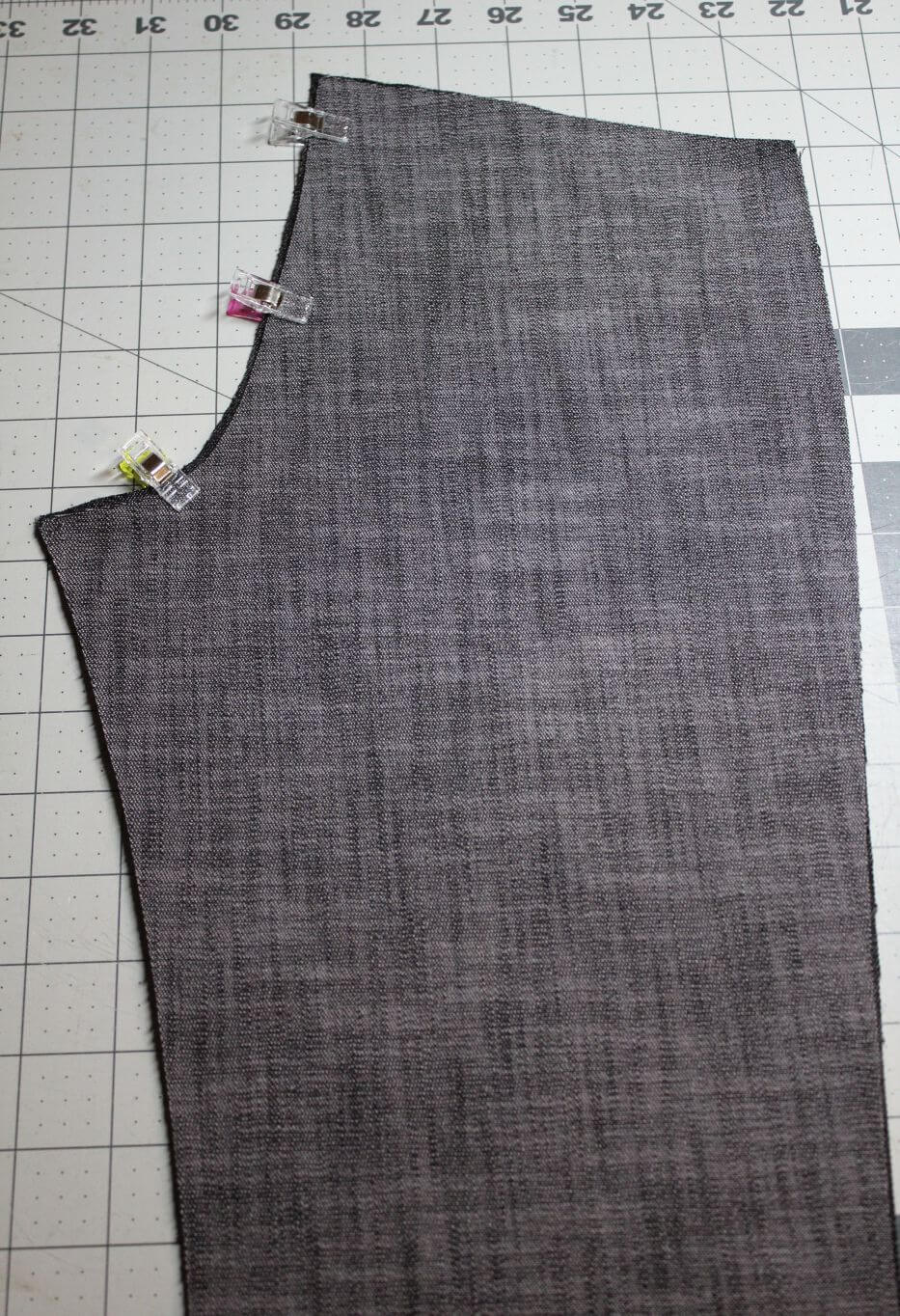
Topstitch the seam allowance from above over to the left side.
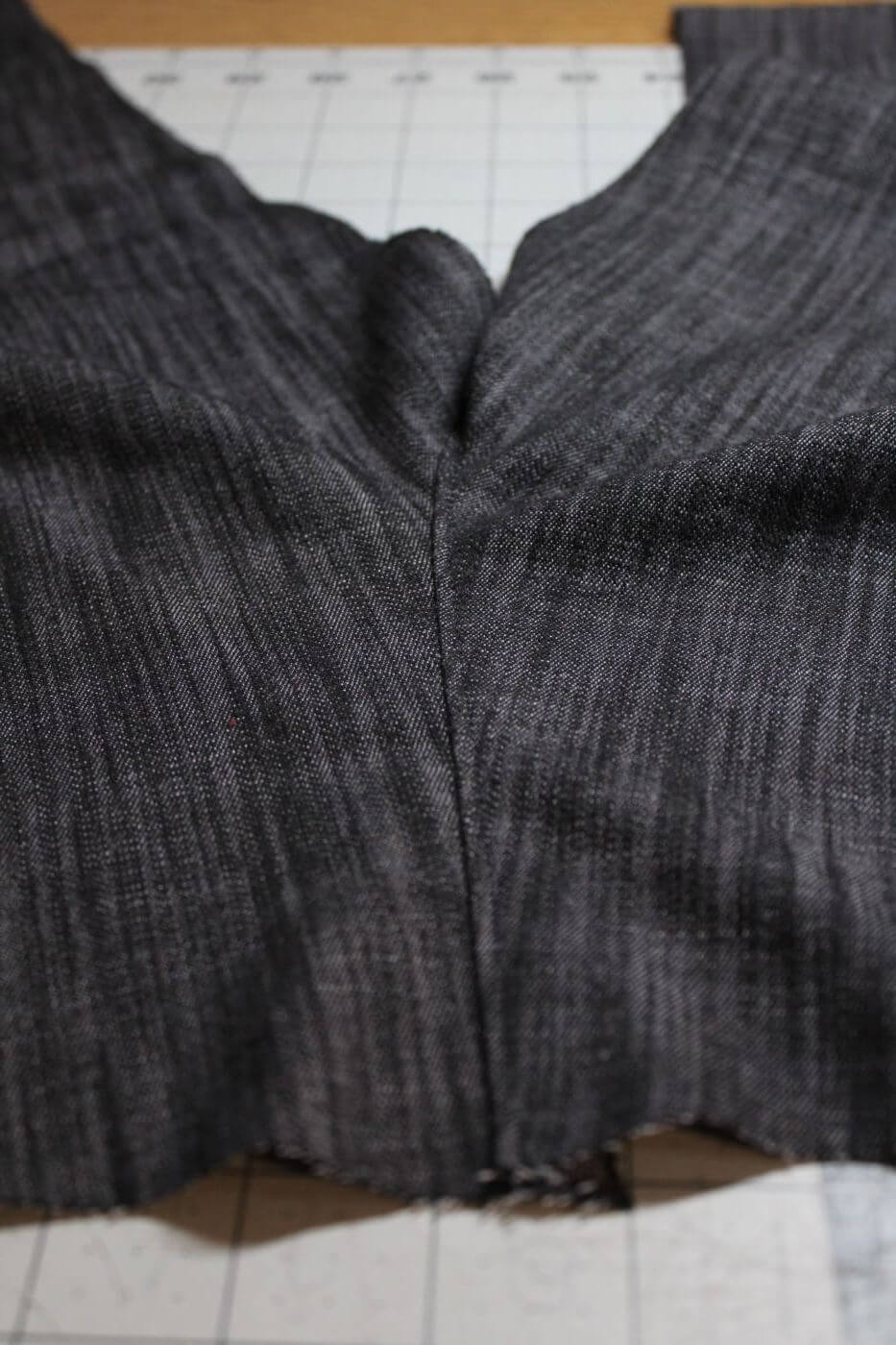
Since we didn't include the faux fly; we will take our front pant pieces and place them with right sides together and sew along the front rise curve.
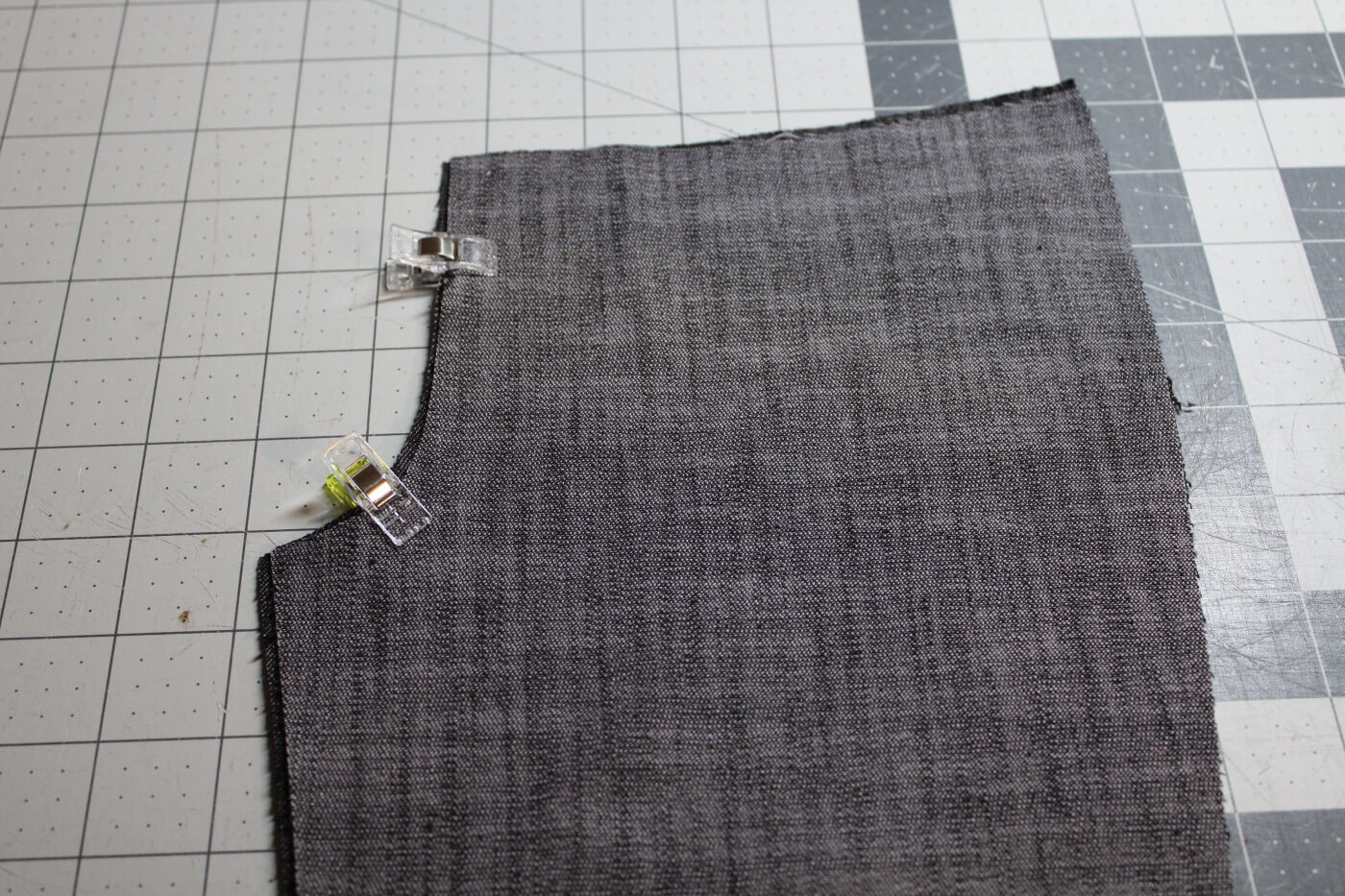
Topstitch the front seam allowance towards the left side.

Now we will sew the front and back together along the inseam.
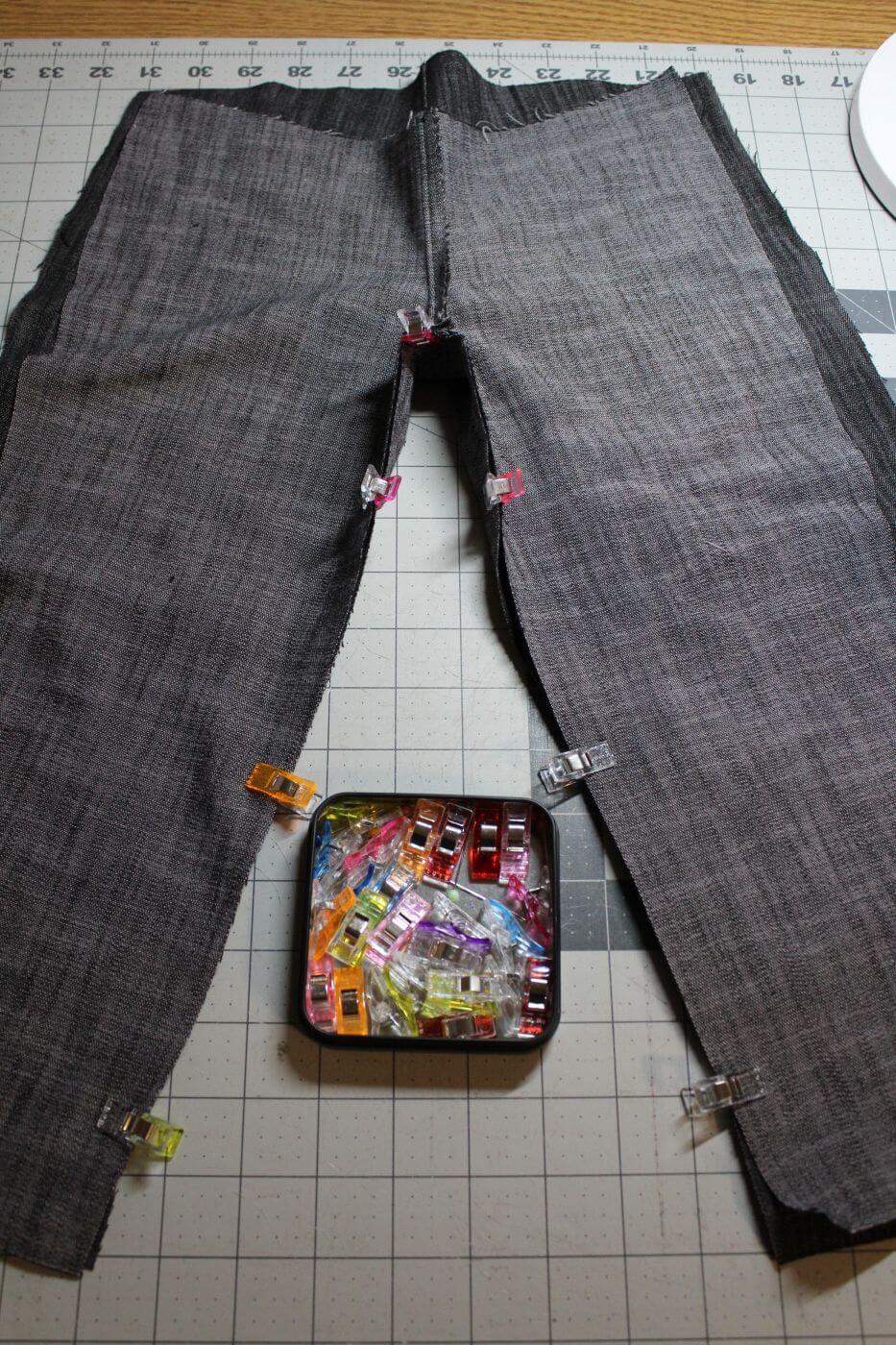
Once the inseam is sewn up, we will topstitch the seam allowance towards the front of the pants.
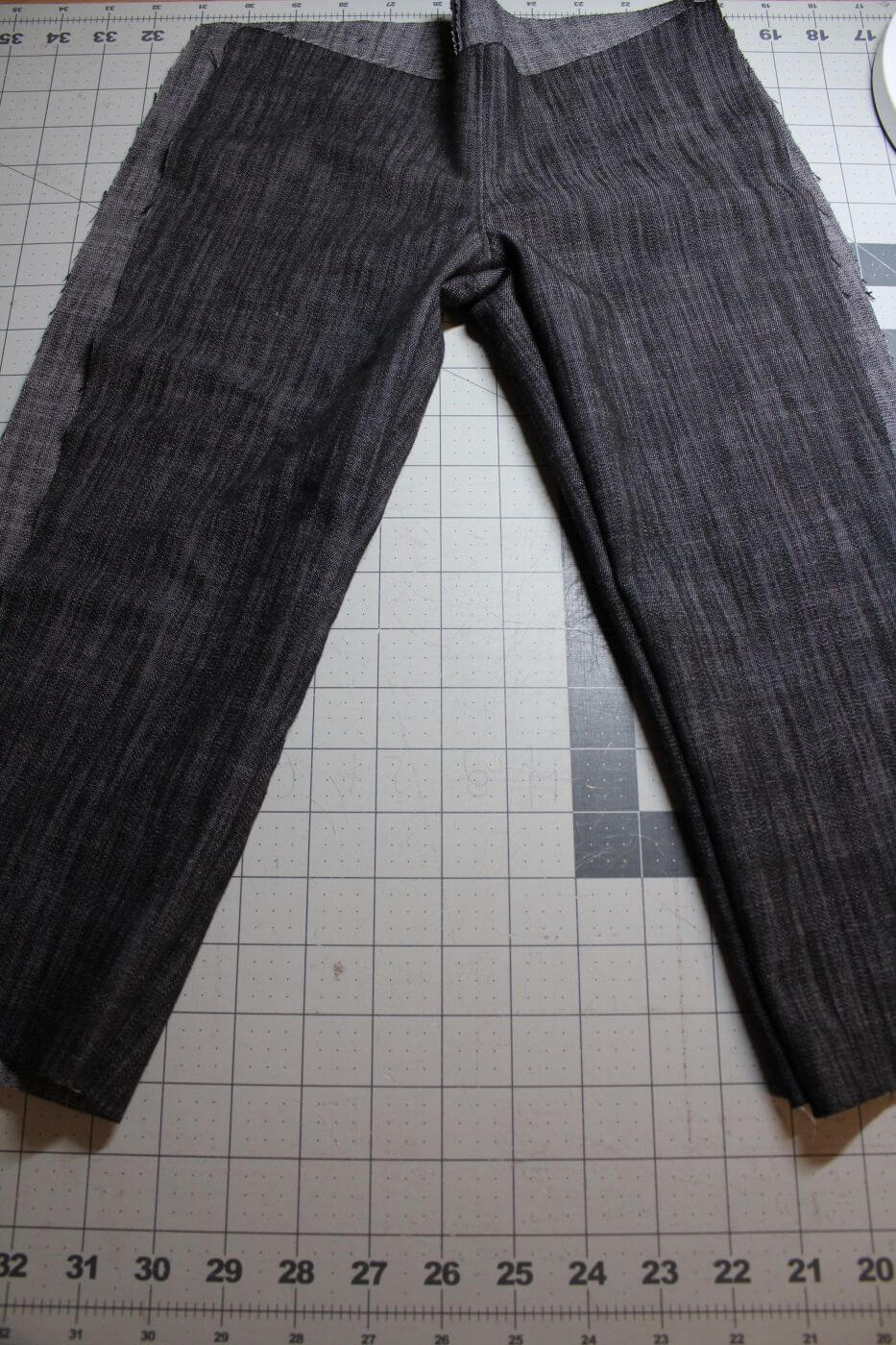
Topstitching The inseam to the front side.

Grab your iron and press the bottom edge of the pant leg up 1/2" in preparation for the hem. Repeat for the other side.
Fold it up again 1/2" creating a double fold and press flat. Repeat for the other leg.
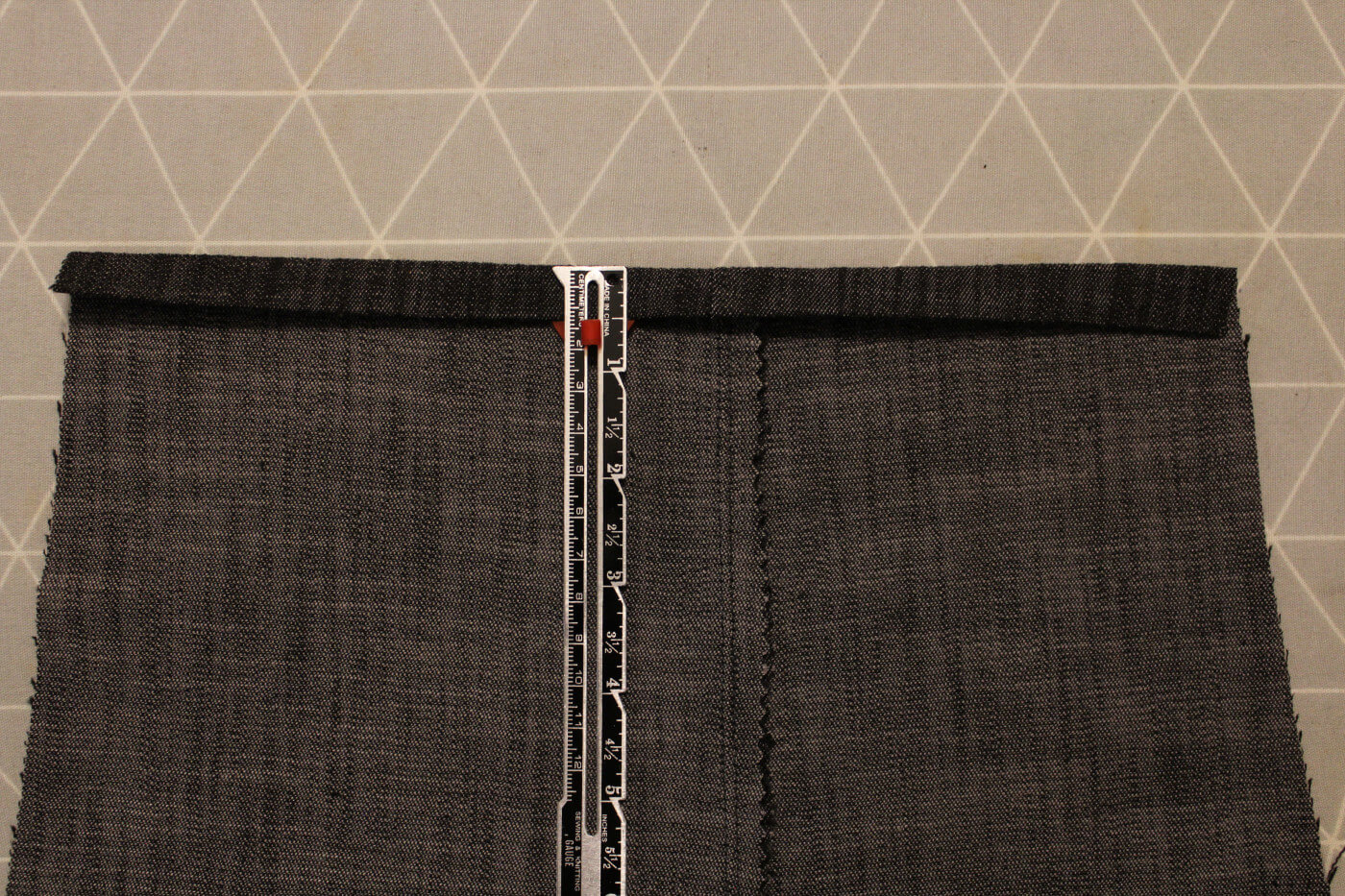
Unfold the creases we just made for the hemline and pin or clip the outside leg pieces together with right sides and sew the side seams.
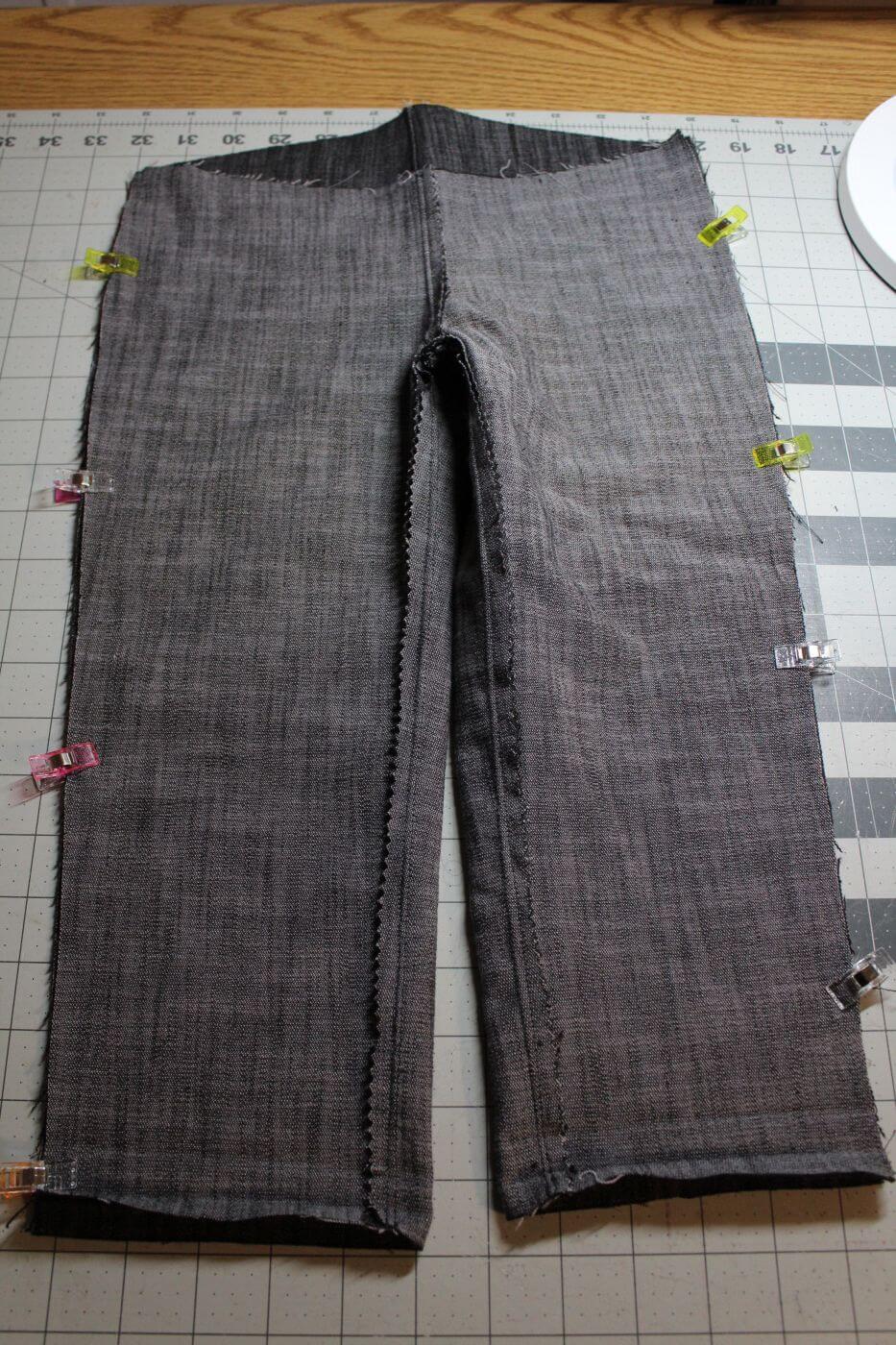
The side seams are complete. Next, we will work on the waistband.
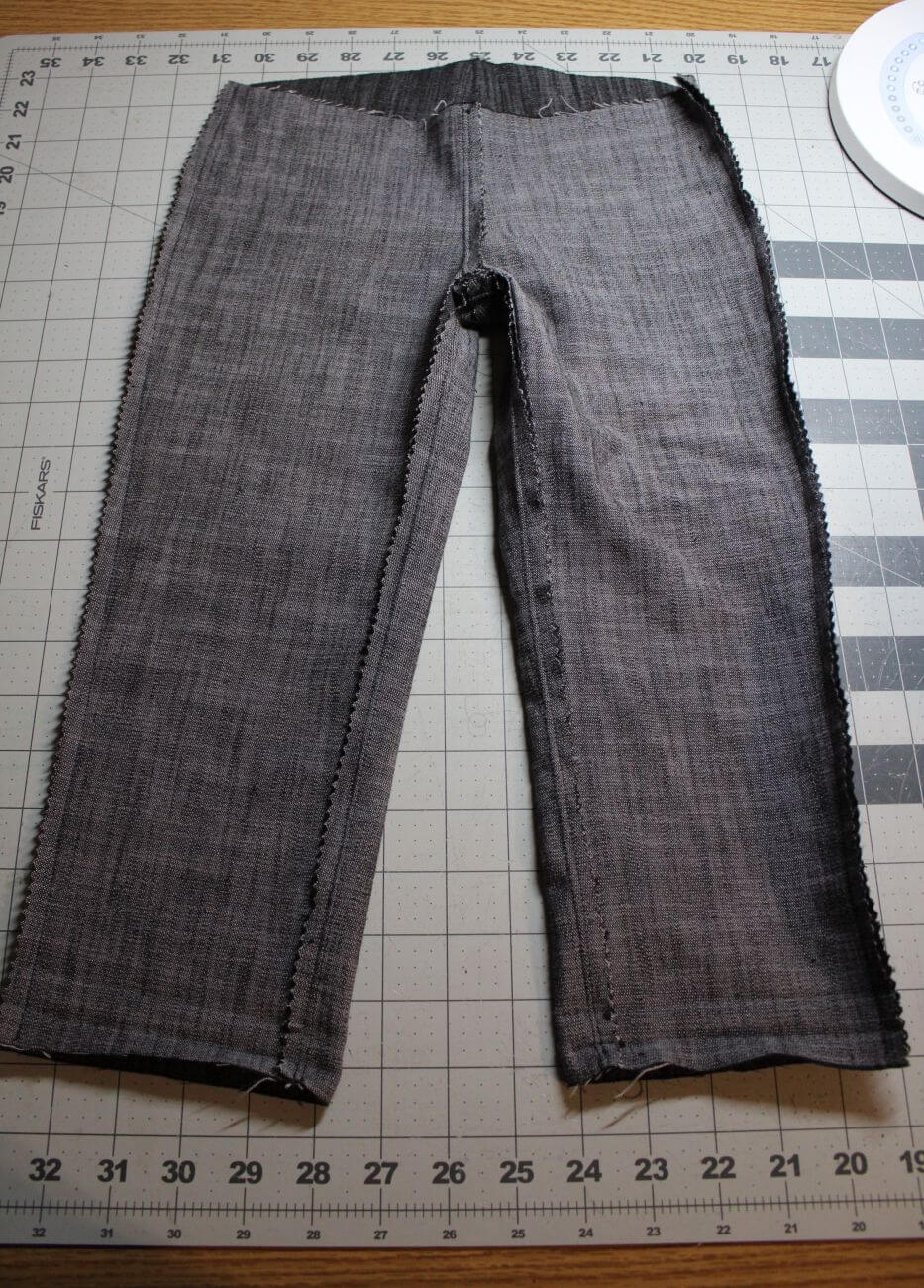
With right sides together, sew the short end of the waistband. *I did not add any buttonholes or grommets for a drawstring to keep this super simple.

The elastic cut chart is available in the pattern on step 28.
Overlap the elastic edges and sew a zig-zag stitch.

Slid the elastic inside the folded waistband.

Baste the raw edges of the waistband closed.
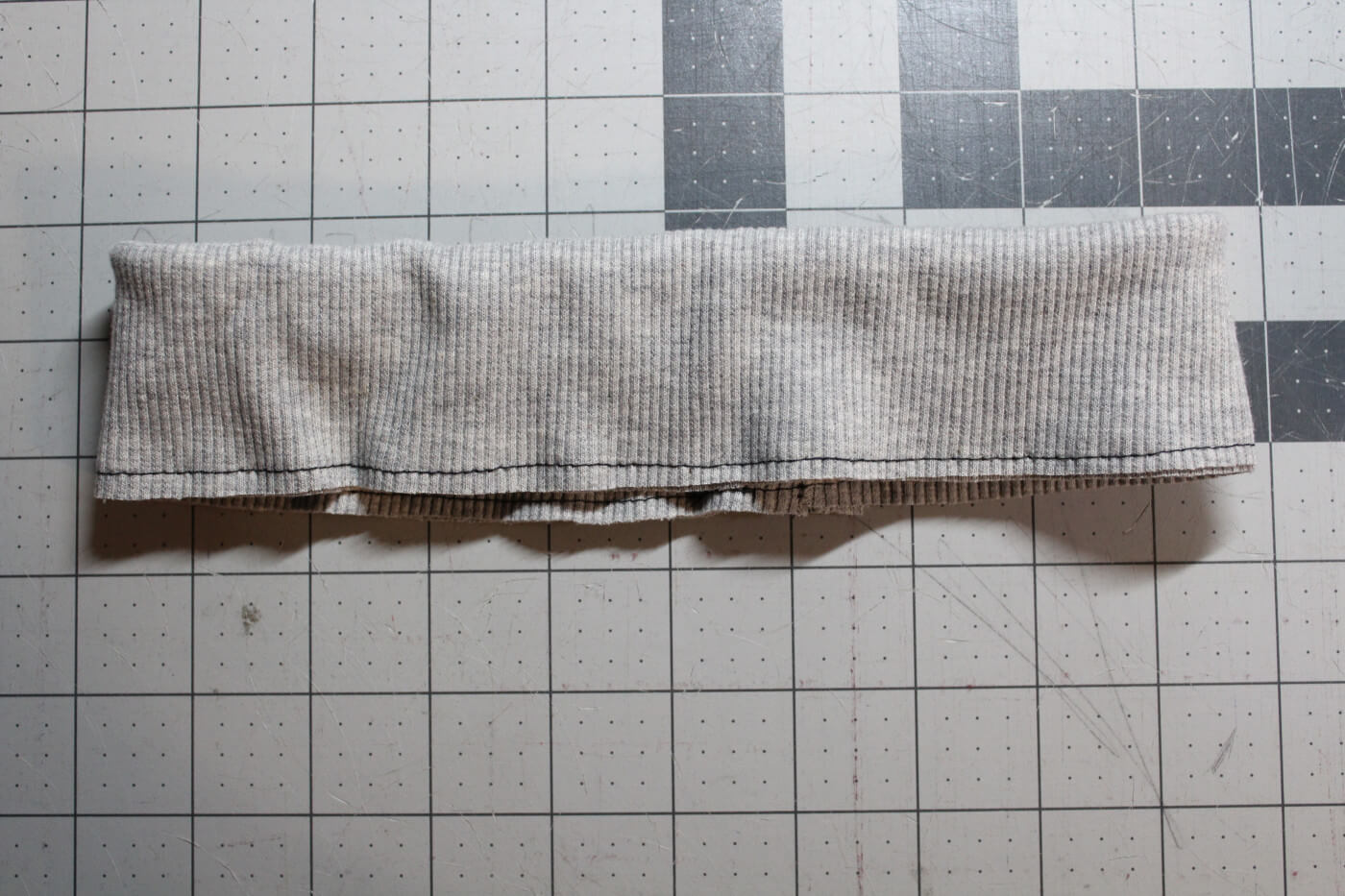
Topstitch two rows through the waistband and elastic.
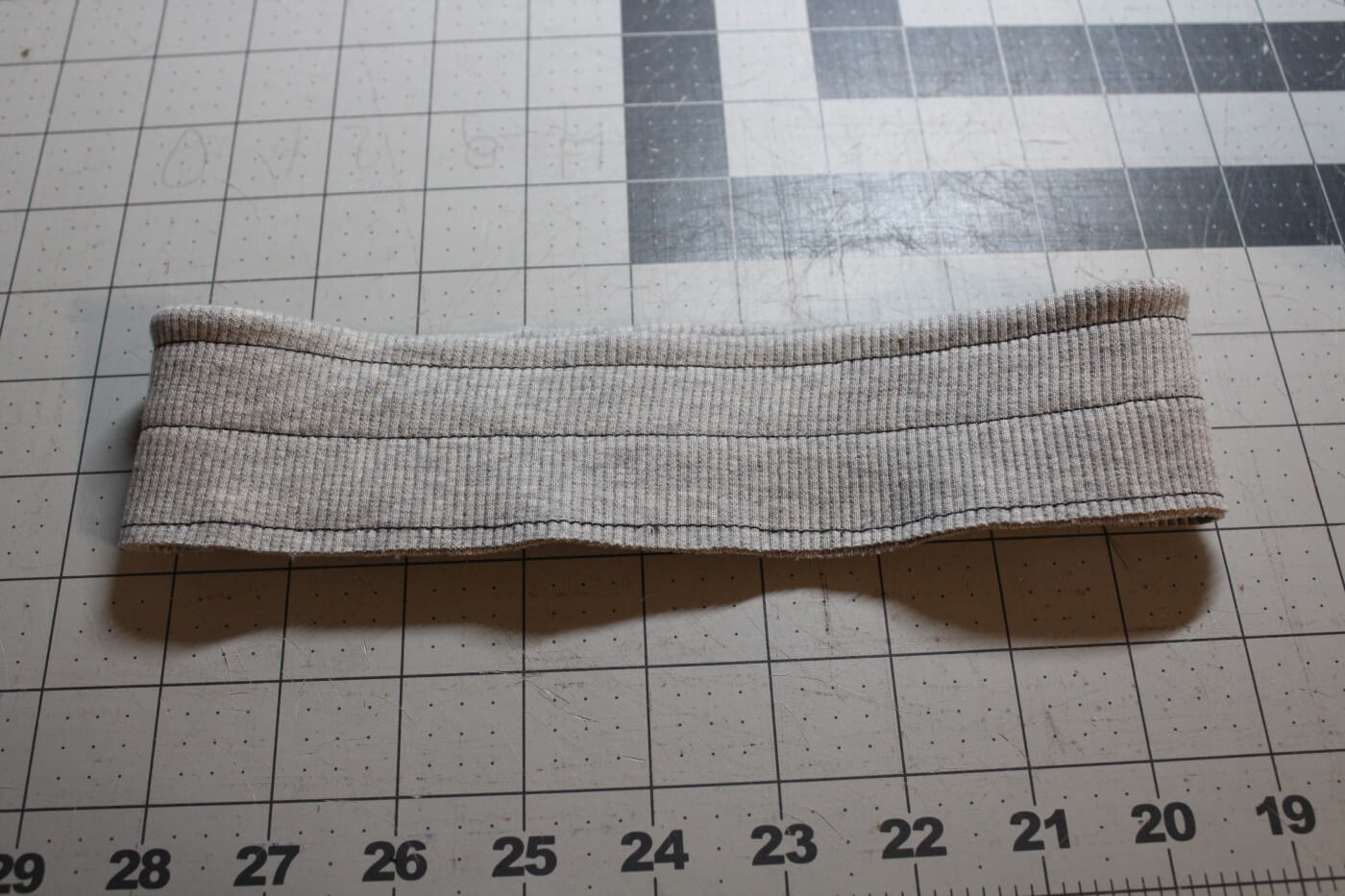
Slide the waistband over the pants with right sides together and sew the waistband to the pants.
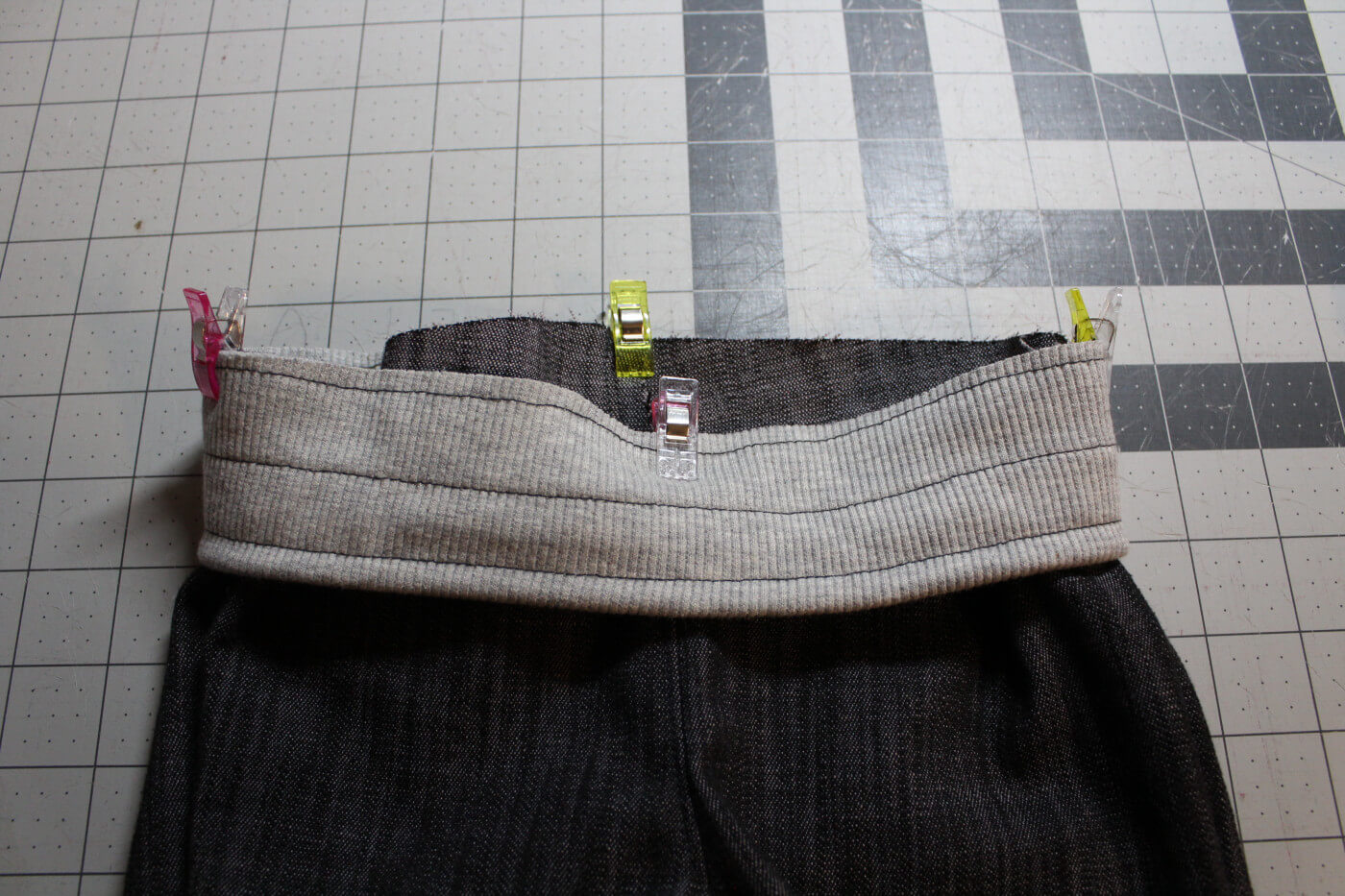
Set aside for now. Next, we will begin our lining pieces.

Now we will sew the front and back inseam and side seam lining pieces together. Leave a gap in one leg inseam.

Turn one of the pant legs right side out and slide it inside the other pant leg so that right sides are together. Sew along the rise.
![]()
Slide the outside pants inside the lining keeping them right sides together. Sew through all the layers attaching the lining to the waistline.
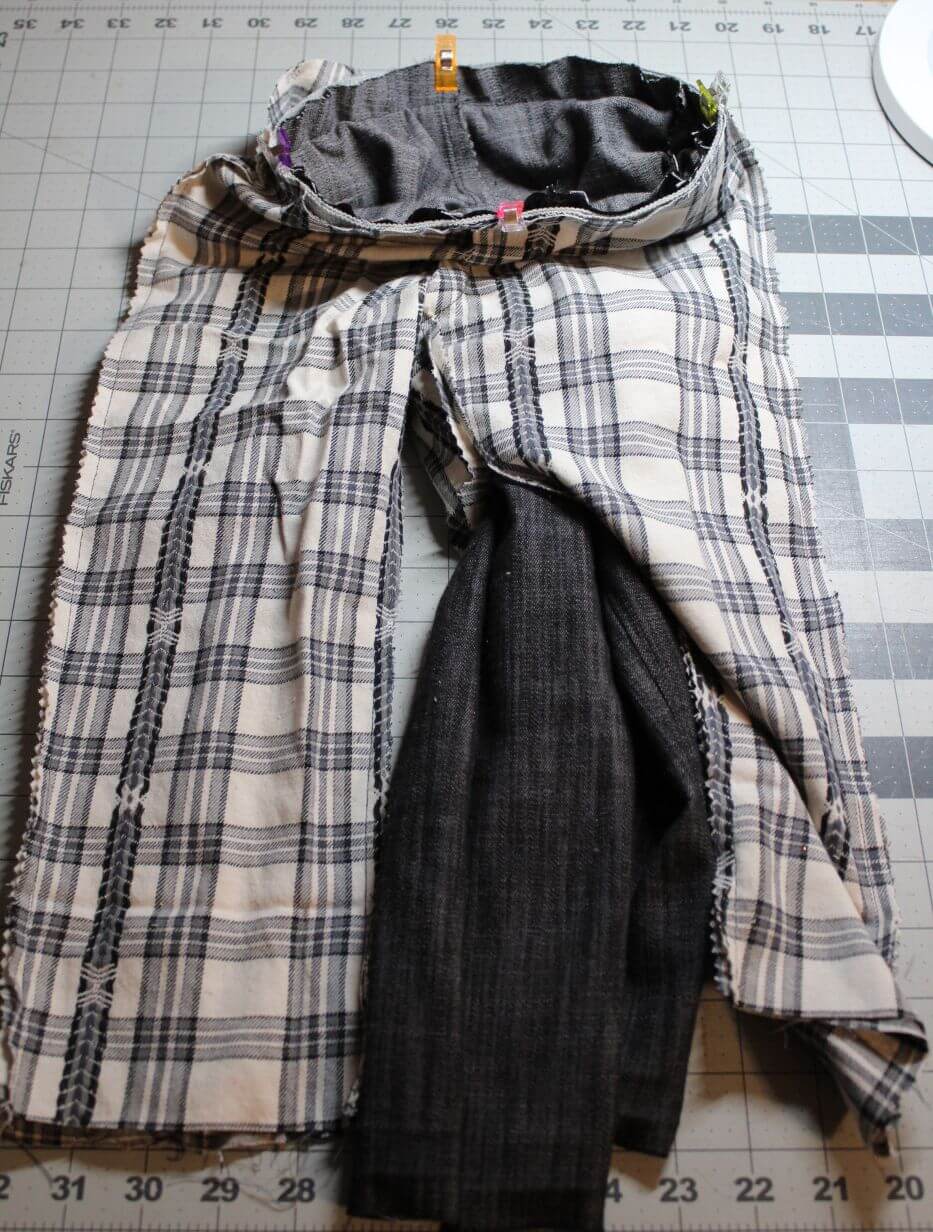
Trim the seam allowance back to prevent bulkiness.
![]()
Turn the pants right side out through the gap opening we left in the lining inseam. Sew the gap shut.
![]()
Push the lining into the inside of the pants.
![]()
Topstitch the waistband seam allowance to the pants.
![]()
Refold the hem of the pants. The lining will be enclosed during the folding and secured after topstitching.

Topstitch the hemline for both pant legs. If you chose the cuff version, go ahead and tack it in place along the side and inseam.
![]()
And that's it! You just made yourself a pair of twill pants.
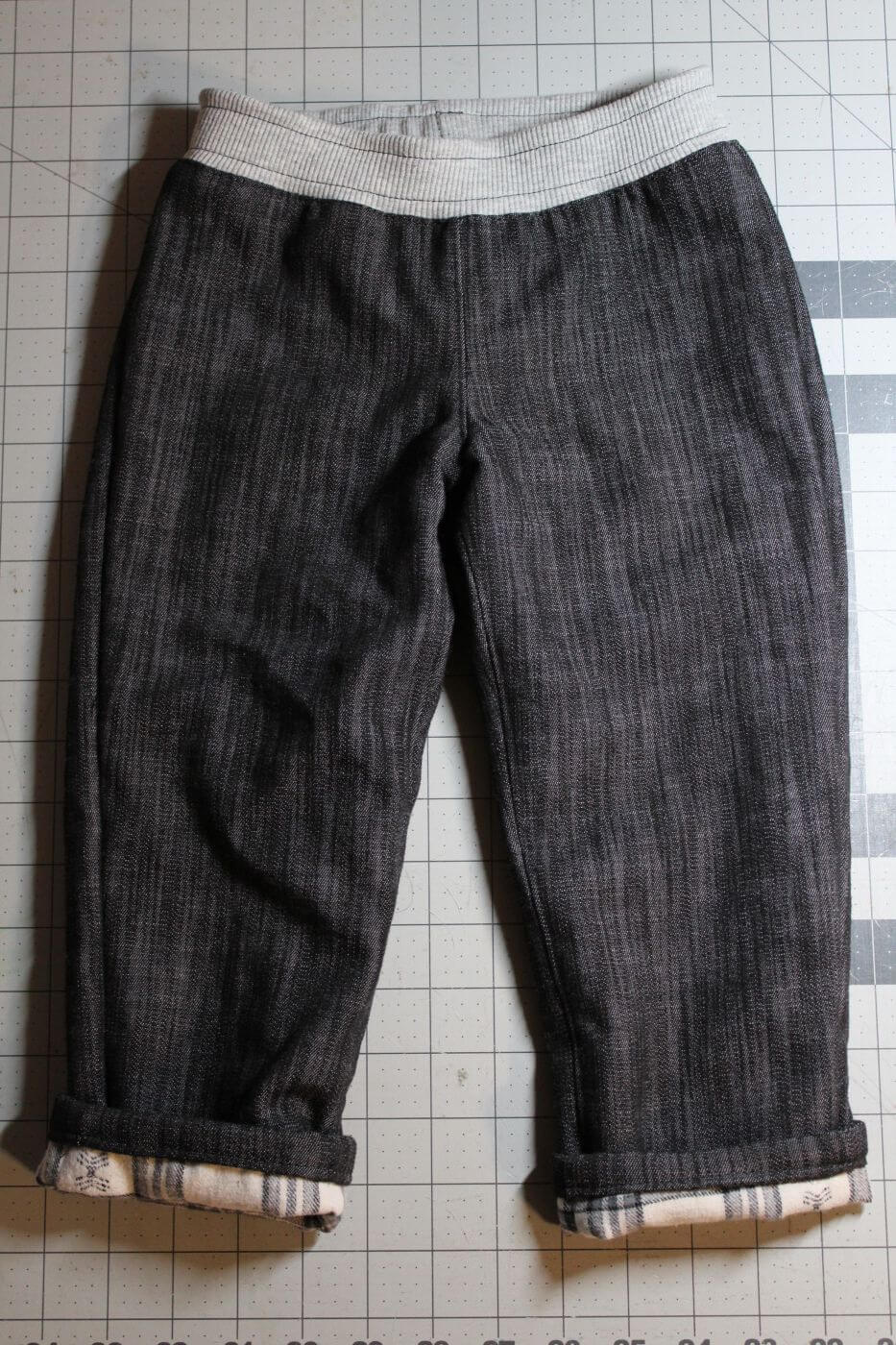
This twill was a dream to sew with and it looks so nice. It can be dressed up or down and the flannel lining adds an extra touch of warmth.
As far as the trailblazer pants pattern goes- you can make a really nice, sophisticated pair of pants for a child if you choose to use all the bells and whistles that are included in this pattern!
So, we learned that twill is really just a name for a weaving technique and that it comes in many different bases of fabric. It's resistant to wrinkles and hides dirt marks. It isn't see through and has many different uses be it a nice pair of denim jeans all the way down to home good items. Twill truly is something versatile to work with and I hope you'll give it a try if you haven't already.
How to Care for Twill Fabric
Proper care for cotton twill is essential to maintain its quality. When washing, use cold water and mild detergent to prevent shrinking and color fading. Consider air-drying to prevent wrinkles and maintain the fabric's shape. For stubborn wrinkles, iron on a low setting. Avoid bleach and hot water to preserve the integrity of the cotton twill fabric. Following these simple care tips will ensure your cotton twill fabric remains as good as new.
What are the different types of twill weaves?
The three most common types of twill weaves are regular twill, herringbone twill, and satin twill. Regular twill has a diagonal pattern, herringbone twill has a zigzag pattern, and satin twill has a smoother, more lustrous finish. Each type of twill weave creates a unique texture and appearance in fabric.
Conclusion
In conclusion, twill fabric is a versatile and durable material that offers many advantages for sewing projects. Its distinctive diagonal weave gives it a unique texture and drape, making it suitable for a wide range of garments and home decor items. Twill fabric is known for its resistance to wrinkles and stains, ensuring that your creations maintain their appearance over time. When caring for twill fabric, follow the recommended washing instructions and use proper ironing techniques to preserve its quality. It's important to consider the environmental impact of twill fabric production, including energy consumption and eco-friendliness. By effectively understanding and utilizing twill fabric, you can elevate your sewing projects and create beautiful, long-lasting pieces.
Thank you for joining us today to learn a little more about twill fabric. Before you leave, make sure to join our Facebook Group and follow us on Instagram. Happy Sewing!

